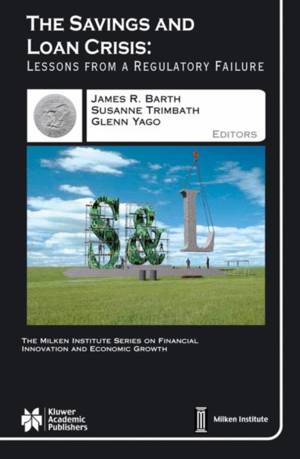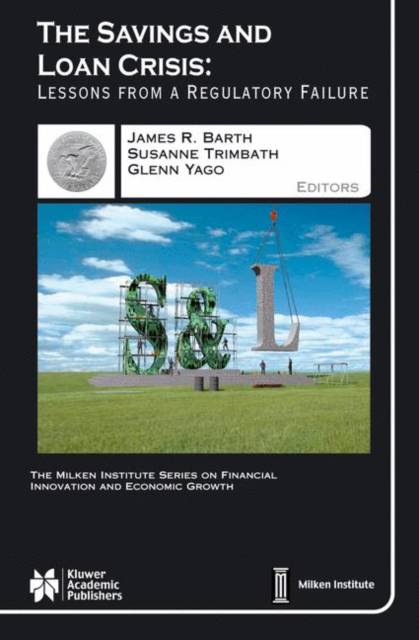
Je cadeautjes zeker op tijd in huis hebben voor de feestdagen? Kom langs in onze winkels en vind het perfecte geschenk!
- Afhalen na 1 uur in een winkel met voorraad
- Gratis thuislevering in België vanaf € 30
- Ruim aanbod met 7 miljoen producten
Je cadeautjes zeker op tijd in huis hebben voor de feestdagen? Kom langs in onze winkels en vind het perfecte geschenk!
- Afhalen na 1 uur in een winkel met voorraad
- Gratis thuislevering in België vanaf € 30
- Ruim aanbod met 7 miljoen producten
Zoeken
The Savings and Loan Crisis
Lessons from a Regulatory Failure
€ 251,45
+ 502 punten
Omschrijving
Robert L. Bartley Editor Emeritus, The Wall Street Journal As this collection of essays is published, markets, regulators and society generally are sorting through the wreckage of the collapse in tech stocks at the turn of the millennium. All the more reason for an exhaustive look at our last "bubble," if that is what we choose to call them. We haven't had time to digest the lesson of the tech stocks and the recession that started in March 2001. After a decade, though, we're ready to understand the savings and loan "bubble" that popped in 1989, preceding the recession that started in July 1990. For more than a half-century, we can now see clearly enough, the savings and loans were an accident waiting to happen. The best insurance for financial institutions is diversification, but the savings and loans were concentrated solely in residential financing. What's more, they were in the business of borrowing short and lending long, accepting deposits that could be withdrawn quickly and making 20-year loans. They were further protected by Regulation Q, allowing them to pay a bit more for savings deposits than commercial banks were allowed to. In normal times, they could ride the yield curve, booking profits because long-term interest rates are generally higher than short-term ones. This world was recorded in Jimmy Stewart's 1946 film, It's a Wonderful Life.
Specificaties
Betrokkenen
- Uitgeverij:
Inhoud
- Aantal bladzijden:
- 394
- Taal:
- Engels
- Reeks:
- Reeksnummer:
- nr. 5
Eigenschappen
- Productcode (EAN):
- 9781402078712
- Verschijningsdatum:
- 20/07/2004
- Uitvoering:
- Hardcover
- Formaat:
- Genaaid
- Afmetingen:
- 156 mm x 234 mm
- Gewicht:
- 789 g

Alleen bij Standaard Boekhandel
+ 502 punten op je klantenkaart van Standaard Boekhandel
Beoordelingen
We publiceren alleen reviews die voldoen aan de voorwaarden voor reviews. Bekijk onze voorwaarden voor reviews.








